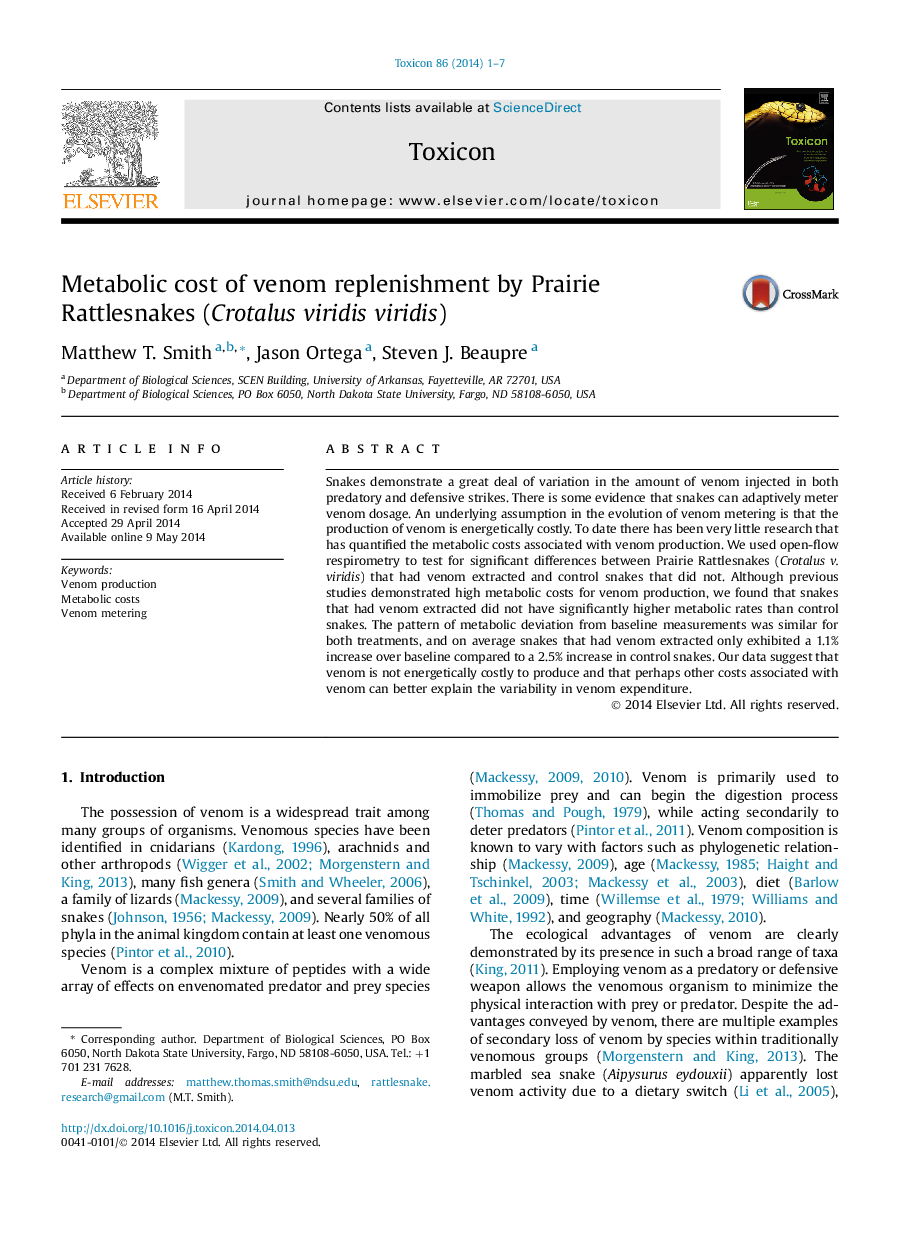| Article ID | Journal | Published Year | Pages | File Type |
|---|---|---|---|---|
| 2064653 | Toxicon | 2014 | 7 Pages |
•Energetic cost of venom production was determined using 53 Prairie Rattlesnakes.•We present the first metabolic cost of venom study that used control animals.•The metabolic expenditure of treatment groups did not differ significantly.•Cost of venom production is undetectable in comparison to cost of maintenance.•Energetic cost of venom is an unlikely cause for the evolution of venom metering.
Snakes demonstrate a great deal of variation in the amount of venom injected in both predatory and defensive strikes. There is some evidence that snakes can adaptively meter venom dosage. An underlying assumption in the evolution of venom metering is that the production of venom is energetically costly. To date there has been very little research that has quantified the metabolic costs associated with venom production. We used open-flow respirometry to test for significant differences between Prairie Rattlesnakes (Crotalus v. viridis) that had venom extracted and control snakes that did not. Although previous studies demonstrated high metabolic costs for venom production, we found that snakes that had venom extracted did not have significantly higher metabolic rates than control snakes. The pattern of metabolic deviation from baseline measurements was similar for both treatments, and on average snakes that had venom extracted only exhibited a 1.1% increase over baseline compared to a 2.5% increase in control snakes. Our data suggest that venom is not energetically costly to produce and that perhaps other costs associated with venom can better explain the variability in venom expenditure.
